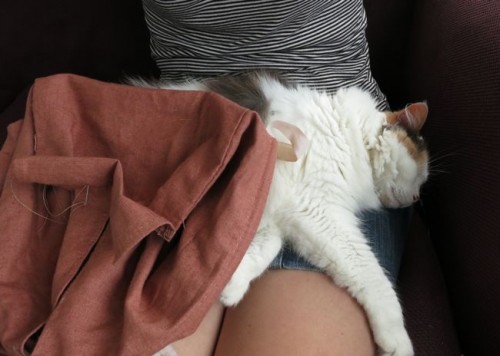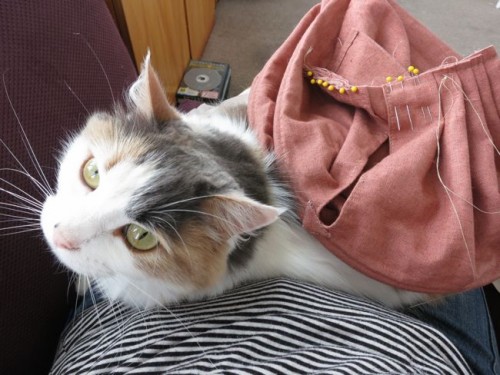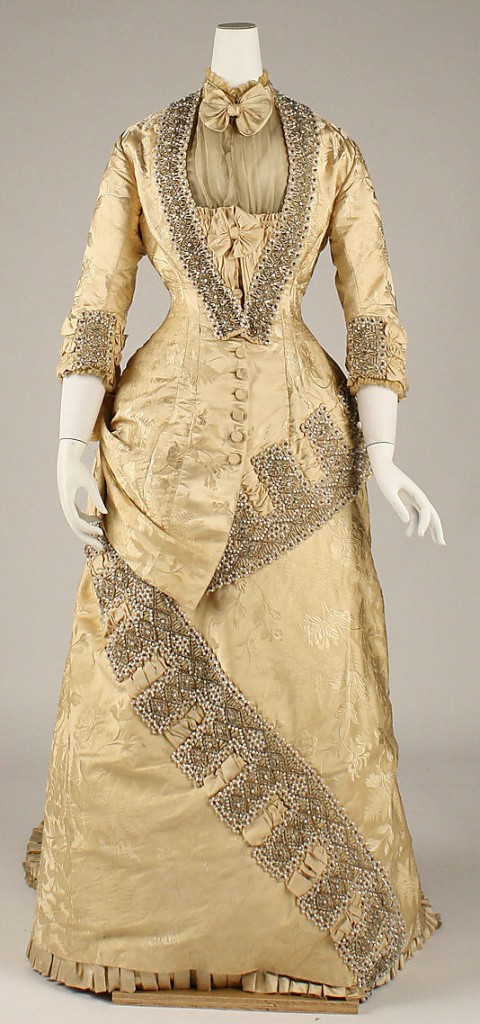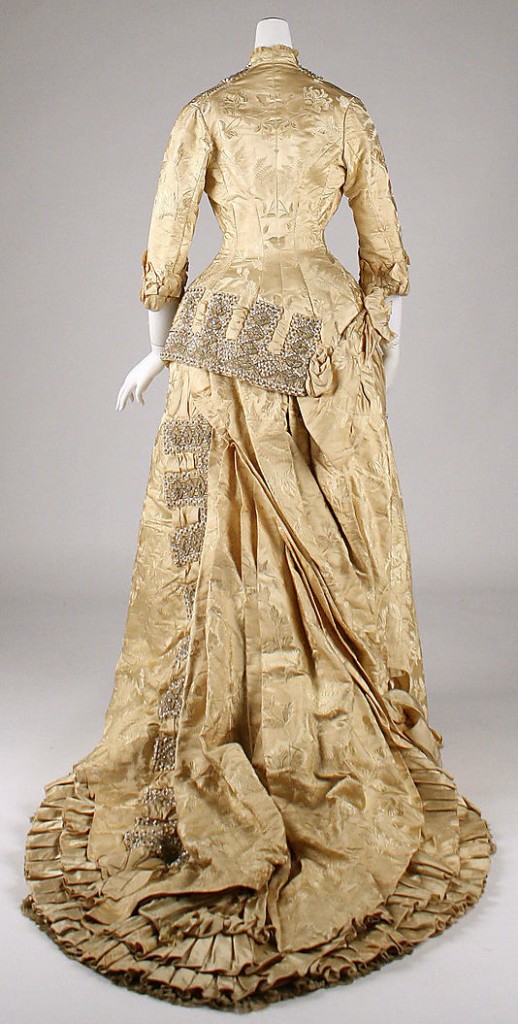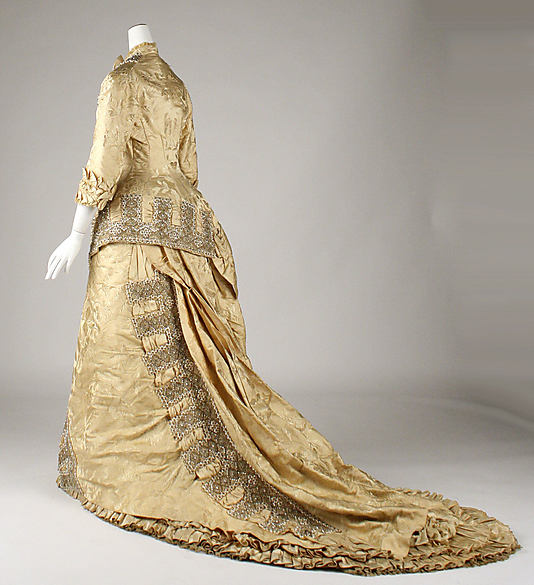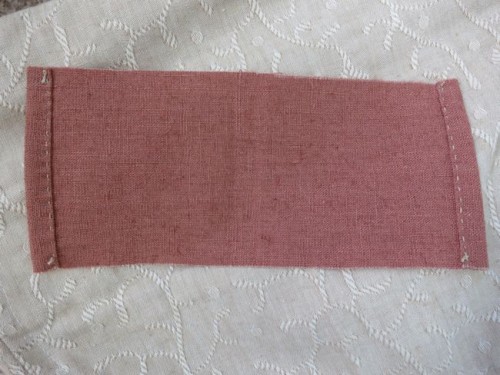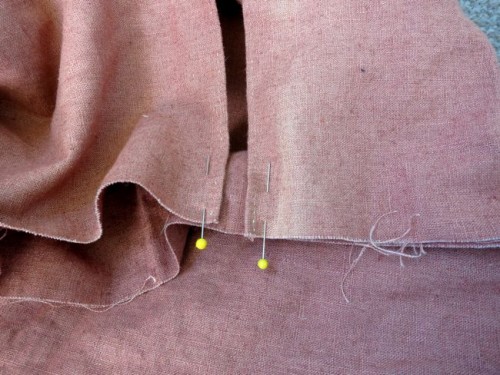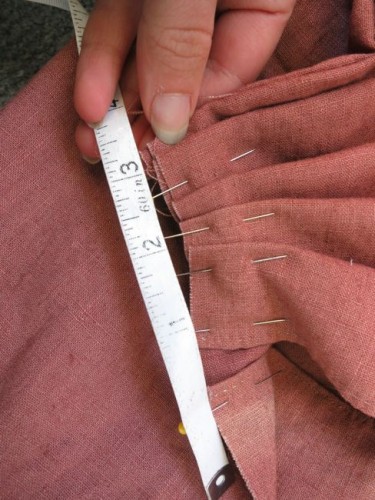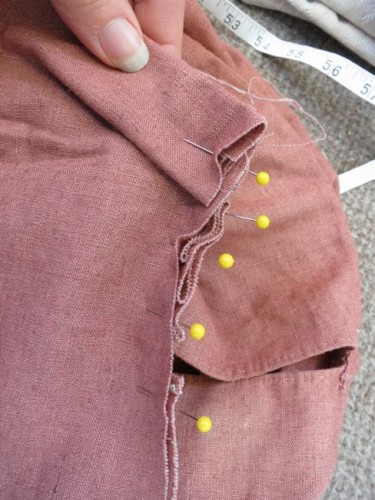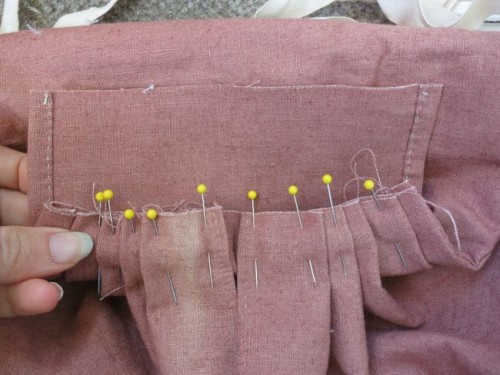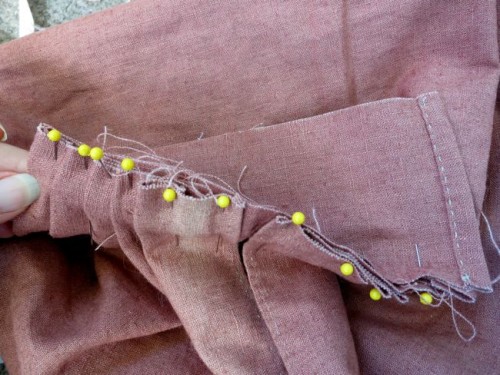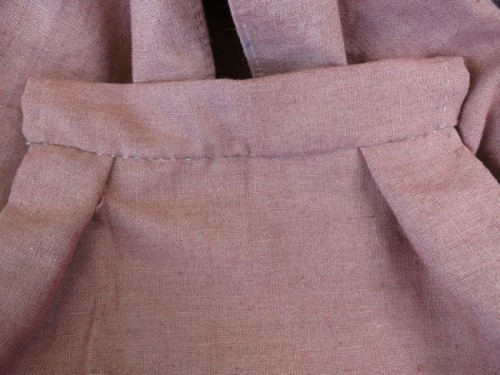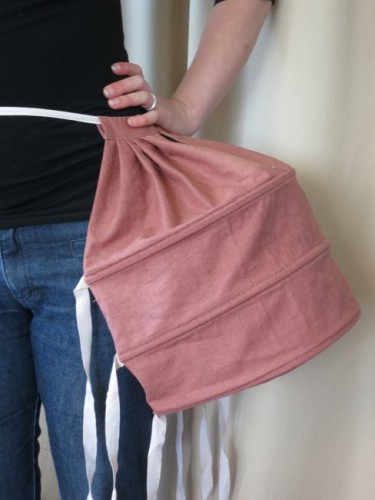Yay! The Panier-Along is done! (or at least all the instructions are up, feel free to keep making them and leave a comment on the page with a link to your finished paniers).
My paniers are done too. I won’t have time to do a proper photoshoot with them over a chemise and with stays for a few weeks yet – too busy teaching classes, running off on road trips with friends to the South Island and Art Deco weekend and doing my own sewing to get dressed up.
So here is a quick holder photoshoot with my super-historically-accurate tank top and denim skirt, just to show that they do work:
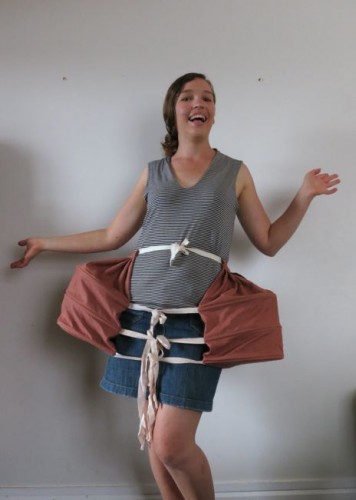

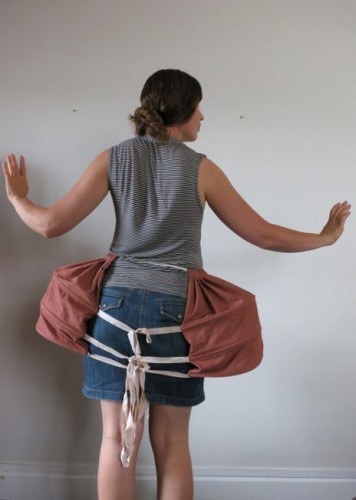

The Challenge: Under It All (undergarments)
Fabric: Brick-red linen ($2 at an op shop some years ago)
Pattern: self-drafted, based on the pattern in Corsets and Crinolines and other historical examples
Year: 1760-1780
Notions: Cane hooping ($6), heavy twill tape (less than 20 cents at an op shop), twill tape ($1), linen thread (inherited from Nana)
How historically accurate is it? Very – all the materials are as close as I could get to period accurate, and it is hand sewn with linen thread using period stitches.
Hours to complete: 4 of actually sewing, another 8 of documenting and blogging
First worn: Wednesday 6 Feb (Waitangi Day) for photos.
Total cost: Under $10 (Yay!)
And two final photos – here is Felicity helping me with the last bits of sewing:
